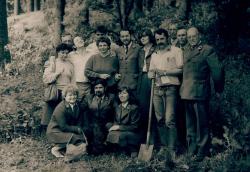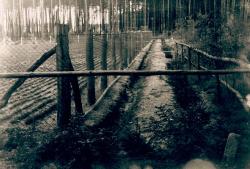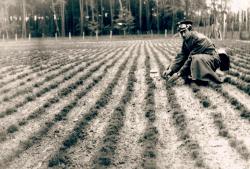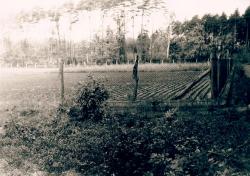 Asset Publisher
Asset Publisher
Polish forests
Poland is in the European lead, while concerning the area of all forests. They cover about 29,2 % of the country territory, and grow within the area of 9,1 million hectares. The overwhelming majority of the forests is state owned, of which almost 7,6 million hectares are managed by the State Forests National Forest Holding..
The number of Polish forest is still growing. The forestation rate of the country has increased from 21 % in 1945 to 29,2 % at the moment. Between 1995 and 2008, the forest area increased by 310 thousand ha. The basis for afforestation works is the "National Programme for Increasing the Forest Cover" (KPZL), assuming an increase of the forestation rate up to 30 % by 2020 and up to 33 % by 2050. Polish forests abound in flora, fauna and fungi. 65 % of the total number of animal species live there.
The forests grow in our country on poor soils, mainly because of the development of the agriculture in previous years. It influences the distribution of the types of the forest sites in Poland. Over 55 % of the forest areas is covered with coniferous forests. In other areas, there are forest sites, mainly the mixed ones. Their small part constitute alder and riparian forests – not more than 3 %.
In the years 1945 – 2011 the area of natural deciduous tree stands within the area of the State Forests National Forest Holding increased from 13 to 28,2 %.
Within the lowlands and uplands the most often occurring tee species is pine. It covers 64,3 % of the forest area of the State Forests National Forest Holding and 57,7 % of private and commune forests. In the mountains the predominant species is European spruce ( in the west) and European spruce with beech (in the east). Domination of pine is the result of carrying on sustainable forest management in the past. Once, the monocultures (crops or cultivations of one species) were the answer to the great demand of industry for wood. Such forests appeared to be quite fragile to climatic factors. They also were often the prey of pests' expansion.
In Polish forests, the share of other tree species, especially deciduous trees have been systematically increasing. The foresters have stepped aside from monocultures – that is why, they try to fit specific species of the forest stand to the natural stand, that would be proper for the given area. Thanks to that, in the years 1945 – 2011, the area of the deciduous tree stands within the lands of the State Forests National Forest Holding increased from 13 to 28,2 %. There occur more and more frequently the following tree species: oaks, ashes, maples, sycamore maples, elms, but also birches, beeches, alders, poplars, hornbeams, aspens, tilias and willows.
Our forests are the most often represented by the forest stands aged 40 to 80 years. The average age of the forest equals 60 years. More and more trees are of big size at the age over 80 years. Since the end of the Second World War, the forests' area has increased up to almost 1,85 million hectares.
Raport o stanie lasów w Polsce 2012
 Asset Publisher
Asset Publisher
 Asset Publisher
Asset Publisher
History
History
 Pracownicy Nadleśnictwa podczas prac w terenie. Fot. Archiwum Nadleśnictwa Szprotawa
Pracownicy Nadleśnictwa podczas prac w terenie. Fot. Archiwum Nadleśnictwa Szprotawa
 Widok na dawną szkółkę leśną. Fot. Archiwum Nadleśnictwa Szprotawa
Widok na dawną szkółkę leśną. Fot. Archiwum Nadleśnictwa Szprotawa
 Leśnik podczas prac na szkółce. Fot. Archiwum Nadleśnictwa Szprotawa
Leśnik podczas prac na szkółce. Fot. Archiwum Nadleśnictwa Szprotawa
 Widok na dawną szkółkę leśną. Fot. Archiwum Nadleśnictwa Szprotawa
Widok na dawną szkółkę leśną. Fot. Archiwum Nadleśnictwa Szprotawa
Current area of Szprotawa Forest District was established by Director-General of the State Forests on 1st April, 1993. Earlier it had also included Żagań Sub-district (from 1976).
First chronicle notes on forest economy in the area are dated as early as 1430. According to chronicles, in 1430 the town of Szprotawa already had its own forester to manage town forests. The forests covered the area of about 4300 ha and were located in south-eastern area of the contemporary Szprotawa Sub-district. They also included the area of "Buczyna Szprotawska" that had been a protected area for a long time and in 1930s gained status of a nature reserve covering the area of 85.20 ha. The reserve in its current shape covers the area of 152.30 ha. Two commemorative stones dedicated to successive Forest Inspectors of town forests from 19th century can be still admired in the reserve.
In addition to "Buczyna Szprotawska" there were two other reserves in the District - "Wysoki Las" (Tall Forest) and "Błota nad Szprotą" (Marshes by Szprota). The District Inspectorate also protected its natural monuments – "Chrobry" Oak, at the time known as "Wielki Dąb" (Huge Oak) ("Grosse Eiche") and "Buk Trębacza" (Trumpeter's Beech) ("Trompeterbuche").
The remaining forests of the present Szprotawa Forest District were owned by rich landowners and local farmers. Even today tourists can admire border stones of Heinrich von Neuman – 19th century owner of Wiechlice estate and the neighbouring lands.
Modern history
Szprotawa Forest District was established in 1946 and covered the area of current Szprotawa Sub-district amounting to about 8000 ha. The original division was very simple – one section constituted one unit.
Between 1945 and 1951 the division was based on an approximate age class table.
From 1952 to 1965 forest management was based on the provisional plan and finally in 1965 a definitive plan based on complete appraisal was drawn up.
During all the years that have passed since the end of WWII the State Forests, including Szprotawa Forest District, have gone through a number of reorganizations and territorial divisions.
In the 1970s, as a result of enclosure of units, a single large Forest District was formed to include 4 Sub-districts (Szprotawa, Małomice, Żagań and Żuków) and cover the area of more than 100 000 ha. Currently Szprotawa Forest District includes two Sub-districts (Szprotawa and Małomice) having approximately 19 000 ha of forests each, with total territorial range of 65 000 ha. As part of the Lower Silesian Wilderness Szprotawa Sub-district forms compact whole, whereas Małomice Sub-district includes over 300 forest complexes, including 106 with area below 1 ha and 114 with area from 1 to 5 ha. Field and forest border of the Forest District is about 1000 km long, which makes it comparable with the lengths of Polish-Czech and Polish-Slovakian borders altogether.
Since 1946 Szprotawa Forest District has been managed by seven Forest Inspectors (including the current one). The most famous Forest Inspector was Zygmunt Patalas (1951 - 1952), who was later appointed the Director of Forest Research Institute in Warsaw. From 1947 to 1951 Białobrzezie Forest District Inspectorate (from 1951 known as Żuków Forest District Inspectorate, included into Szprotawa Forest District Inspectorate in 1973) was managed by Adam Szczerba, who was later appointed the Director-General of the State Forests.


 fot. Paweł Fabijański
fot. Paweł Fabijański
 fot. Paweł Fabijański
fot. Paweł Fabijański
 fot. Paweł Fabijański
fot. Paweł Fabijański




